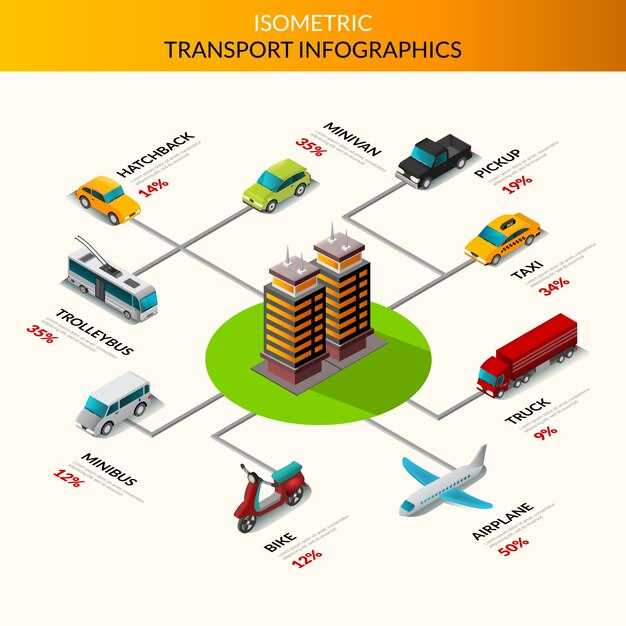
In the market, their options span modules that integrate with ERP and warehouse controls. wisetechs offers several adapters that reduce integration time by approximately 30% and deliver automated workflows, supporting independence rather than vendor lock-in.
Focus on crucial features to optimize costs: automated routing optimization, real-time carrier benchmarking, and carbon accounting. Since data quality matters, ensure API-first design to reduce integration friction. Their approach blends artificial intelligence with human judgment to reduce the causes of delays and prevent overwhelm during peak demand. Several signals should trigger proactive actions, not manual firefighting.
Independence from any single provider comes from open data models and modular add-ons. The best-of-breed approach, combined with intelligent decisioning, helps automated workflows respond to several demands for capacity, service, and cost. This reduces risk of overload and gives operators a clear action set via dashboards.
Implementation typically takes approximately 6–12 weeks for core routing and visibility, with another 4–8 weeks for carrier onboarding. Start with the most demanding lanes, measure carbon impact and cost per mile, and then scale. This approach tackles the challenge of data quality and user adoption while delivering quick wins that already show impact in less than three months.
When evaluating, seek a platform with market-ready connectors, strong audit trails, and automated exception handling. Ensure their data model supports ongoing optimization across modes, with best-of-breed options and intelligent analytics. Since every operation has demands, the solution should adapt quickly, leveraging wisetechs’ ecosystem of integrations to support your independent expansion.
Operational Evaluation Framework for 2025 Logistics Suite Selection
Begin with a concrete recommendation: select an affordable, modular, cloud-based suite designed for neutrality in data exchange; run a 6-week pilot in shanghai to validate integration, performance, and ROI.
Below are the evaluation factors to benchmark before any commitment: alignment with business objectives, data readiness, interoperability with ERP and warehouse tools, security posture, and total cost of ownership.
Additionally, demand a future-ready architecture with APIs, event-driven capabilities, and scalable data handling; ensure the ability to employ both internal analytics and external services as needed.
Assess pressures from real-world operations: congestion on key corridors, escalating costs, and capacity constraints; quantify impact on transit times and service reliability across routes including shanghai and other hubs.
Specifically, evaluate coverage for critical lanes and airways; measure dwell times, on-time performance, and fault tolerance of handoffs between carriers and 3PLs.
Use a scoring model below, weighting factors such as reliability, data quality, ease of integration, and cost-competitiveness; reject options that fail to meet minimum thresholds on any of the core criteria.
Neutrality in vendor roadmaps is essential; verify references, assess expertise, and test the ability to leverage advanced analytics while avoiding lock-in.
Oracle integration readiness: confirm data models, authentication methods, and real-time updates via standard APIs; ensure data sovereignty policies are supported by the platform.
Marketsandmarkets insights should inform scoping and risk planning; align the selection with their projections while validating local constraints in markets such as ports and airways.
Finally, craft a rollout plan with measurable milestones, a broader pilot in shanghai and additional markets, and a clear go/no-go gate for implementation.
Define Stakeholder Needs and Use Cases
Recommendation: catalog stakeholder needs into four core use cases, validate with live data, and deliver an informational overview plus an indicative ROI estimate within four weeks. Align investments with strategic goals across the organization and set guardrails to prevent scope drift.
Identify four stakeholder groups: operations and carrier networks; finance and procurement; IT and data governance; and executive leadership. For each group, capture explicit success metrics, decision criteria, and refusal points (restraint). Use independent interviews and source data to craft a strength-based profile that reflects dynamics in the field. For operations, target on-time delivery, load utilization, and fuel efficiency; for finance, focus on total landed cost and cash flow; for IT, emphasize interoperability, data quality, and risk; for leadership, track strategic risk and return on investments. Use ranks and indicative ranges to guide prioritization.
Develop a use-case catalog that covers food delivery across multiple regions, with demand spikes, cross-docking, and cold-chain visibility. Include ai-powered scenario planning for capacity, dynamic routing, and predictive maintenance. Distinguish between standalone modules and all-in-one platforms; determine whether each use case benefits from an independent app or needs a tightly integrated stack. Each use case should deliver value in days to weeks, with clear indicators like service level changes and cost reductions.
Map data sources: ERP feeds, WMS activity, carrier portals, telematics, GPS, and finance systems. Specify informational data objects (shipments, orders, lanes, rates) and create an outline of framework interfaces: APIs, EDI, and file-based exchanges. Define an informational overview of data quality requirements, master data governance, and data lineage. Outline how an all-in-one or standalone component will ingest, cleanse, and enrich data to support planning, execution, and settlement. Include a rough estimate of integration effort and ranges for internal resources and vendor investments.
Establish a governance model that enforces cross-functional union while maintaining independent controls. Create a living scorecard to monitor dynamics like cycle time, inventory turns, and carrier performance. Use a restrained scope to avoid feature creep and ensure early wins, while preserving flexibility to adapt to changing rules and markets. The assessment should deliver an informational baseline and indicative milestones to validate the business case.
In global operations, consider regional strength and supplier diversity; markets like israel present unique logistics dynamics and offer ai-powered tools tailored to cold-chain and regulatory constraints. Use cases should accommodate ranges of supplier networks, from local unions to global manufacturers, and note how investments can scale from small pilots to enterprise-grade programs.
Roadmap: start with two high-impact use cases (order visibility and carrier-blind routing), lock down data requirements, and pilot against real shipments (including food) to produce a deliverable ROI outline. From there, expand to three more use cases and decide on all-in-one versus modular modules based on observed value, alignment with frameworks, and organizational readiness. The result should deliver a concise overview of expected outcomes, with an estimate of investment ranges and payback, and a plan to scale across the enterprise.
Shortlist Criteria and Scoring Rubric

Prioritize platforms that deliver reliable last-mile execution, upfront cost transparency, and strong diversification options to boost scalability toward urbanization.
Functionality breadth and strength: Assess the range of modules (planning, routing, carrier selection, and execution) and the ability to extend via tools and code. Ensure coverage across core lanes and seasonal fluctuations; currently available capabilities should support shippers with visibility across concentrated urban nodes and fluctuating demand, reducing manual work and enabling coordinated execution along the chain.
Technical readiness and API depth: Look for open APIs, modular microservices, event-driven data, and the ability to integrate with existing tools. Ensure current code libraries and well-documented samples exist to accelerate onboarding. Prioritize platforms that can connect with legacy ERP/WMS stacks while keeping data latency to a minimum for real-time insights.
Insights and analytics: Demand dashboards, predictive signals for capacity and service levels, and data-sharing capabilities with shippers to improve collaboration. Recent insights from pilots should demonstrate measurable improvements in planning accuracy and in last-mile visibility across multiple carriers.
Localization and latin markets: Evaluate multilingual UI options, currency and tax handling, and regulatory compliance for latin regions. Strong localization reduces implementation risk and supports faster scalability in diverse markets.
Commercial terms and upfront transparency: Examine licensing models, deployment timelines, and upfront cost disclosures. Clear roadmaps and open pilot terms significantly reduce uncertainty and support making an informed go/no-go decision.
Vendor strength and ecosystem: Assess market position, financial health, and the breadth of partner integrations. Look for established collaborators such as trimble and e2open, whose ecosystems provide diversified access to tools and data for shippers and carriers alike.
Implementation risk and support: Onboarding speed, dedicated success resources, and documented playbooks. A concentrated support footprint in key regions accelerates value realization and minimizes fluctuation in performance during go-live.
Scoring rubric: Assign each criterion a 0–5 rating, multiply by its weight, and sum to a final score out of 100. Weights are: Functionality breadth and strength 28, Technical readiness and API depth 22, Insights and analytics 14, Localization and latin markets 12, Commercial terms and upfront transparency 12, Vendor strength and ecosystem 8, Implementation risk and support 4. Use 0–5 performance bands (0=no capability, 5=best fit) for every criterion. Apply to each shortlisted platform to derive a comparable total.
Guidance for use: For shippers evaluating tools, require at least 1 pilot with real data in a concentrated urban corridor, verify API and code access during a trial, and confirm upfront commitments to Latin-language support and currency handling to prevent post-purchase friction.
Deployment Models, Security, and Compliance
Recommendation: Implement a bottom-up, hybrid-cloud model with centralized identity and zero-trust access, anchored by a formal methodology and a robust policy framework. Use best-of-breed software components for access control, data protection, and workflow automation; produce an estimate of total ownership cost and time-to-value; align with major operating regions, among others asean, and other markets; map critical flows across network segments and supplier-consumer interactions; enforce change-control processes to minimize risk.
Security posture centers on identity, device, and network controls. Enforce MFA, least-privilege access, conditional access, encryption at rest and in transit with managed keys, continuous monitoring, vulnerability scanning, and secure software development lifecycle. Deploy a zero-trust network architecture with segment-level boundaries for critical flows and timely incident response. Maintain logs and audit trails to support investigations and compliance report.
Compliance and governance link to frameworks such as ISO 27001, SOC 2, PCI DSS where relevant, GDPR/UK GDPR, and asean data-residency requirements for cross-border supply. Establish a cadence for internal and external reports, and align with reciprocal obligations across partners. Ensure data processing records, access history, and change events are captured; verify data locality and cross-border transfer controls; budget for governance tooling and periodic audits.
| Model | Security Posture | Compliance Focus | Estimate Cost Impact | Time to Deploy | Notlar |
|---|---|---|---|---|---|
| Cloud-only | Centralized IAM, zero-trust, encryption; scalable controls | SOC 2, GDPR, ISO 27001, asean residency rules | 0.6x–0.9x capex-to-opex vs. on-prem; pricing transparency | 4–12 weeks | Best for rapid scaling; requires vendor SLAs and continuous monitoring |
| Hybrid | On-site data stays local; cloud for elasticity; unified policy | ISO 27001, SOC 2, PCI DSS where applicable; asean data rules | 1.0x–1.4x dependent on integration scope; pricing options | 8–20 weeks | Best-of-breed software for security controls; supports critical flows |
| On-premises | Full control; isolated network segments; heavy hardening | ISO 27001, PCI DSS; local data residency | 1.3x–1.8x capex; higher operating expense risk | 12–28 weeks | High control but slow to adapt; requires ongoing maintenance and skilled staff |
| Multi-cloud / distributed | Granular policy across providers; centralized log aggregation | SOC 2, framework-aligned controls, data-transfer rules | 0.8x–1.2x depending on tooling | 6–16 weeks | Flexibility for pricing and capacity; monitor data sovereignty |
Total Cost of Ownership: Licensing, Implementation, and Ongoing Costs

Adopt a cloud-first licensing plan: per-user monthly, bundled core functions, with a fixed renewal price and no upfront hardware. This yields the fastest value and aligns with developments in embedded capabilities while serving multi-site fleets without governance drag.
Licensing options to compare include per-seat, per-transaction, or tiered bundles. For basic operations in public cloud, expect roughly 8–25 USD per user per month, with higher tiers covering route optimization, EDI, and intelligent forecasting. In india and broader asia-pacific regions, costs tend to be lower per user but professional services to localize ensure total price remains competitive; look for acumatica-based ERP connectors included in the package rather than billed separately; avoid aggressive selling of unused modules; insist on a fixed annual uplift cap.
Implementation scope drives the budget. A straightforward deployment across a few sites in india or across an asia-pacific region typically runs 6–9 months; multi-country with carriers and legacy adapters stretches to 12–18 months. Key cost drivers: data migration quality, process reengineering, integration with carriers via APIs, change management, and training. Use prebuilt adapters and a phased rollout to reduce delays and avoid scope creep; this lowers risk and helps teams focus on core workflows rather than customizations.
Ongoing expenses cover support, hosting, upgrades, and optional add-ons. In SaaS, annual maintenance commonly equals 12–22% of the license value; public cloud hosting is often included but could be billed separately at 2–6% per year for large deployments; additional optimization work typically accounts for 10–25% of annual license value. Plan for data growth, retention, and compliance features in regulated sectors; embedded features for transportation planning and intelligent routing can reduce the need for separate tools, thereby lowering long-run expenditures. Enhances security and governance with centralized access control.
Regional realities: cost advantages exist in india and other asia-pacific markets, driven by competitive services and favorable currency dynamics, but data sovereignty rules may necessitate regional instances and dedicated support. Public-cloud deployments typically offer faster time-to-value and automatic updates, while private or hybrid setups add capital and maintenance costs. When expanding to multiple countries, align SLAs with local carriers, ensure cross-border data handling, and factor in latency costs for real-time decisions. Concerns about data privacy should be addressed from day one.
To maximize savings, start with modular, multi-phase deployments; keep the core in a cloud-based platform and add capabilities gradually. Basic modules for order and route planning, with embedded intelligence and digitalization features, can yield tangible gains in trucking operations and detention reductions. Build the business case around account-level metrics: freight cost per mile, on-time delivery rate, and IT footprint. Recognize that a weak data foundation increases total costs and may overwhelm users; invest in data cleansing and governance before expanding footprint. Expected ROI can appear within 12–18 months in well-scoped projects.
Bottom line: define a phased rollout, lock in predictable pricing, and insist on transparent data-migration plans and regional support. Track developments in public cloud readiness, measure reductions in delays and detention, and ensure the chosen platform can serve multiple sites and carriers while reducing total cost of ownership over the long run. This approach supports transforming trucking operations while avoiding spikes in licensing or services expenses.
Integration Readiness: ERP, WMS, Carriers, and Data Flows
Adopt an API-first integration approach to synchronize ERP, WMS, and carrier platforms, dramatically reducing delays and boosting productivity across the value chain.
- Establish a unified data backbone
- Implement a canonical product record with unique identifiers (SKU, GTIN), a shared unit of measure, and packaging metadata to support various verticals.
- Assign data owners (stakeholders) from product, finance, logistics, and customer service to ensure accuracy and timely updates, leveraging internal expertise.
- Design data flows for speed and visibility
- Adopt event-driven messaging (orders, inventory changes, shipments, carrier events) to reduce manual handoffs and empower supporting processes.
- Choose real-time streaming for high-frequency data and batch ETL for reconciliation, with clear service levels and data-quality gates.
- Map integration touchpoints across ERP and WMS
- Define mapping rules for orders, shipments, inventory, and returns; validate with scenario testing to catch gaps early.
- Implement robust data validation, deduplication, and tolerance thresholds to prevent incorrect allocations and improve accuracy.
- Carrier interfaces and flow logic
- Automate rate shopping, service-level checks, and label generation; enable quick switching among carriers to stay resilient and reduce delays.
- Capture tracking events and reconcile with ERP for accurate customer notifications and proactive issue resolution.
- Reverse-logistics and product disposition
- Incorporate returns flows into the same data stream; route to restocking, repair, or recycling with automated approvals and traceability.
- Provide visibility to customers and stakeholders on return status to support rapid decisions.
- Governance, security, and change control
- Establish data ownership, access controls, and audit trails; align with compliance requirements and risk management.
- Track changes in the integration layer and maintain a changelog to support rapid troubleshooting.
- Implementation milestones and success metrics
- Set targets for data accuracy, matching speed, and error rates; monitor with dashboards for stakeholders and senior leadership.
- Prioritize gradual rollout by product family or region to minimize disruption and demonstrate quick wins, enabling increased confidence.
With this framework, the company gains ultimate visibility; supports various roles from warehouse to customer care; the single data model reduces delays and increases customer satisfaction and decision velocity. Expertise across stakeholders often prefers a modular approach, enabling rapid advancements and dynamic adjustments. Algorithms automate exceptions, improving reverse-logistics, product traceability, and cost control while reducing manual touches and lifting productivity.

